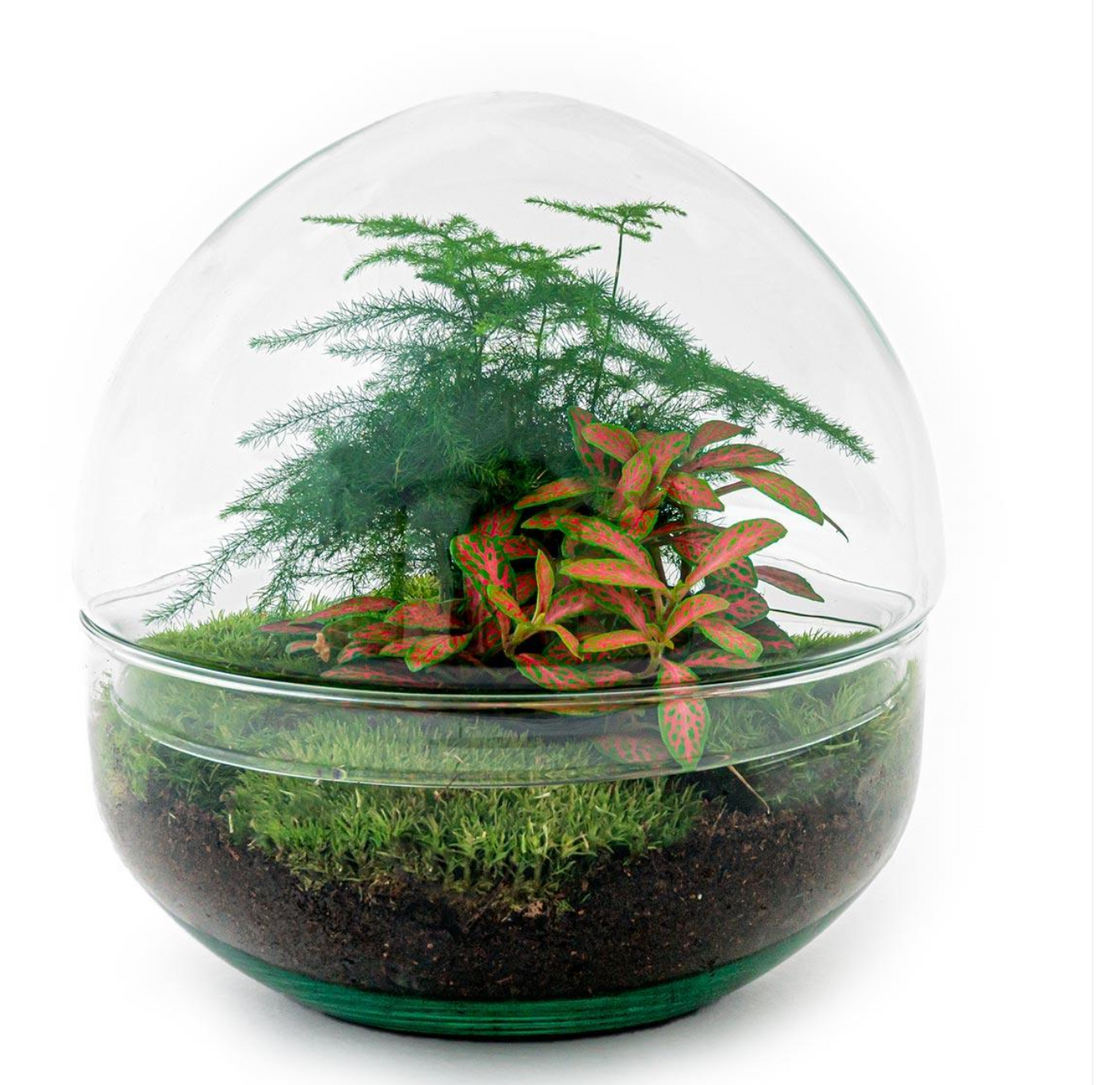
How to Build and Maintain Your Ecosystem Terrarium: A Complete Guide
Share
How to Build and Maintain Your Ecosystem Terrarium: A Complete Guide
An ecosystem terrarium is a small piece of nature that you can create and maintain within your home or office. It’s not only decorative but also a relaxing and rewarding activity. Follow this step-by-step guide to build your own ecosystem and take care of it over time.
1. Thoroughly Clean the Container
Before starting, choose a bottle, jar, or glass container with a lid (if you want a closed ecosystem). It’s essential that the container is clean and free of bacteria. Wash it thoroughly with soap and water, rinse well, and let it dry. This step prevents mold or bacteria growth that could harm your ecosystem.
2. Prepare the Foundation of Your Ecosystem
A well-made terrarium needs a base layer to ensure proper drainage and keep the soil healthy. Follow these steps:
-
Drainage Layer: Start with a thin layer of gravel, expanded clay pebbles, or hydro granules to promote water drainage.
-
Activated Charcoal: Add a layer of activated charcoal on top of the gravel. This will help filter the air and keep the terrarium odor-free.
-
Soil: Spread a layer of soil on top of the activated charcoal. Make sure to use soil suitable for the plants you intend to include.
3. Add Moss and Soil
Place a layer of moss around the inner edge of the container, above the soil. Moss not only enhances the terrarium’s appearance but also helps retain moisture. Gently press the moss to secure it.
After adding moss, complete the container with the remaining soil, spreading it evenly. You can create slight hills or valleys for a more natural effect.
4. Plant Your Greenery
Now comes the most exciting part: planting!
-
Choose plants suited for humid and shaded environments, such as ferns, pilea, fittonia, or succulents for drier ecosystems.
-
Carefully remove the plants from their pots, shake off excess soil from the roots, and create small holes in the soil with your fingers.
-
Insert the plants into the holes and cover them lightly with soil. Press gently to ensure they are stable.
5. Decorate Your Terrarium
Add decorative stones, small branches, or other natural elements to personalize your ecosystem. These details not only make it more beautiful but also create small shelters for the plants.
6. Position the Terrarium and Manage Light
Find a bright spot, but avoid direct sunlight, which can overheat the container. Indirect light is ideal for most terrariums. To ensure all plants receive light evenly, rotate the terrarium a quarter turn every two weeks.
7. Maintain Proper Humidity
-
Condensation: If you notice excessive water droplets on the glass, open the terrarium for 30-60 minutes to allow excess moisture to evaporate.
-
Dry Soil: If the moss or soil appears dry, add 5-10 cl of water, depending on the terrarium’s size. Remember, a closed ecosystem produces its own water cycle, so don’t overwater.
8. Check the Temperature
Keep the terrarium in an environment with a temperature between 15 and 25 °C. Extreme temperatures can damage the plants and disrupt the ecosystem.
9. Long-Term Care and Maintenance
-
If the moss loses its vibrant color, remove it, soak it in filtered water, squeeze it out, and place it back in the terrarium.
-
Prune overgrown plants and remove dead leaves to prevent mold formation.
-
Periodically monitor the terrarium’s overall condition to ensure it remains healthy and balanced.
A well-maintained ecosystem terrarium can last for years, bringing beauty and a touch of nature to your indoor spaces. Enjoy creating your own little green world! 🌿
